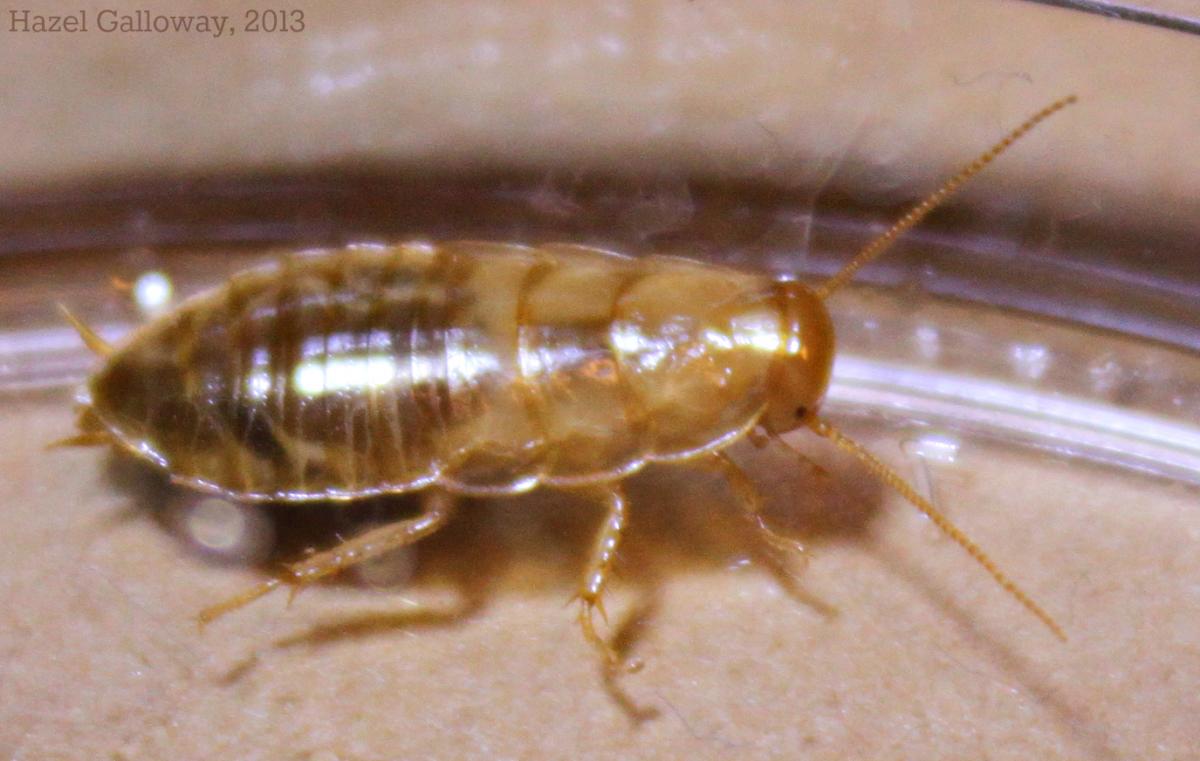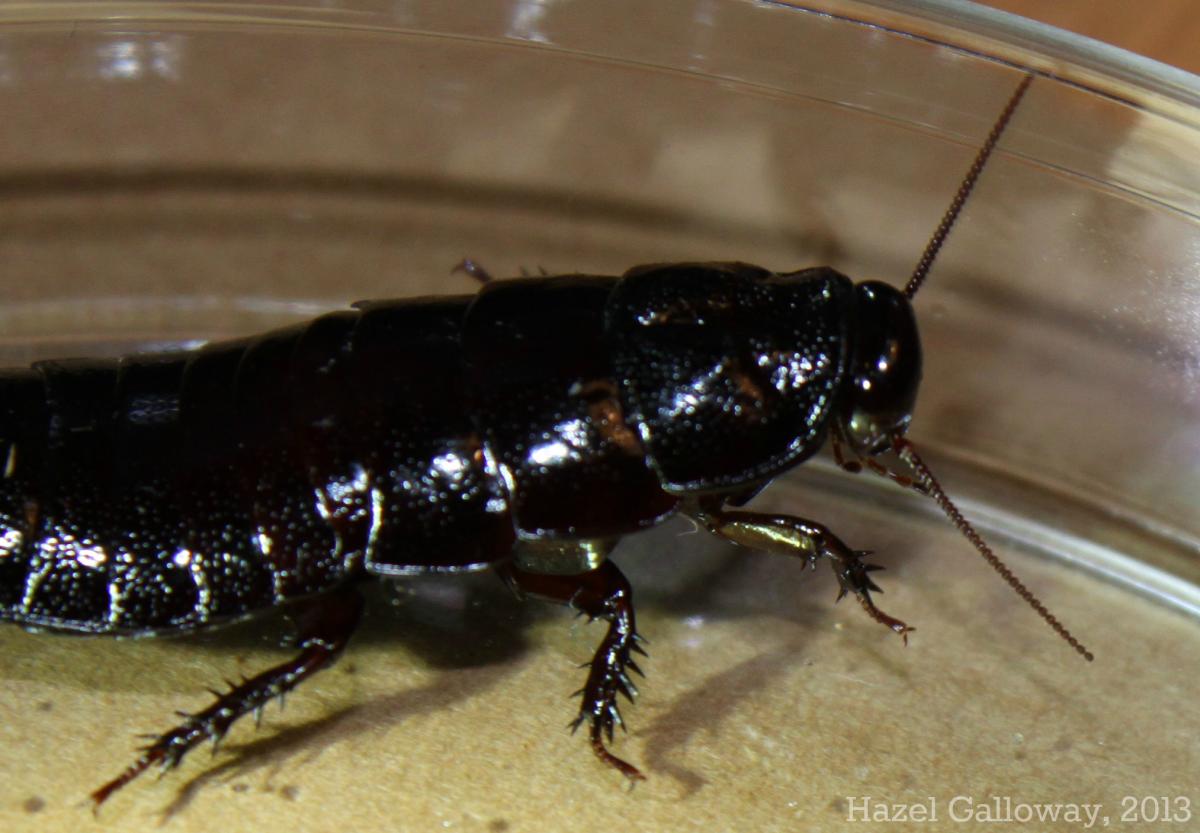Although the wood roach’s name would indicate kinship with the American cockroach, a notorious pest, they are not actually closely related. This is most evident in their lack of wings, unusual among roaches of any sort. The males and females are very difficult to distinguish, having the same dark brown or black coloration and elongated shape. Both sexes are typically 23-30 mm long. One identifying characteristic of the species is the raised forward margin of the pronotum (the segment directly behind the head). This partially covers the top of the head and is thought to protect the head while wood roaches burrow. They are impossible to mistake—C. punctulatus is the only wingless roach in this area.
These roaches are incredible insects in terms of their lifestyle. Once sexually mature, males and females will locate each other and find a suitable log on the forest floor to settle down in. They will probably stay in that log for the rest of their lives. Similar to termites (one of their closest relatives), wood roaches feed on rotting wood and construct galleries in dead trees. After mating, females lay a clutch of 50-100 eggs inside the log occupied by the pair. The mated pair will stay together for several years within the same log and raise a single brood of offspring together. Although they are not the only invertebrate to display parental care, the degree to which they are committed to their offspring is unusual.
Like all insects (and mammals), wood roaches are physically incapable of digesting cellulose. For a species which survives solely by consuming rotten wood, this presents quite a dilemma. However, wood roaches, like cows and other ruminants, harbor a multitude of cellulose-digesting symbiotic microbes in their gut which help convert cellulose into a digestible sugar, such as dextrose. When a roach nymph is newly hatched from the egg (above right), it harbors none of those essential microbes necessary to the digestion of wood. They obtain those microbes through a process called proctodeal trophallaxis (feeding on fluids from the adult’s anus). Without being raised in the presence of an adult, the nymphs could never obtain the necessary gut flora and would certainly starve to death.
C. punctulatus can be found in disjunct areas throughout North America. They occur in the mountainous regions of Oregon and northern California, as well as in the Appalachian Mountains. Rotting, moist hardwood or softwood logs serve as both their home and their food source, and they can typically be found under or within them. Unlike many of their relatives (either termites or cockroaches), they rarely enter human dwellings and are not considered pests. Four species in the Cryptocercus genus are recognized worldwide, with only one of these endemic to the eastern United States. However, recent genetic work suggests the presence of four separate evolutionary lineages in the Eastern US, which may be impossible to tell apart without examining their DNA sequence and chromosome number. Extensive research has been done on this species at MLBS by Dr. Christine Nalepa.
This adult roach and the nymph were found under a rotting log in front of Clayton.
Hazel Galloway
Sources:





